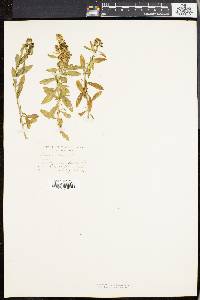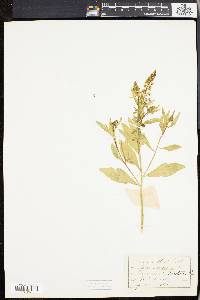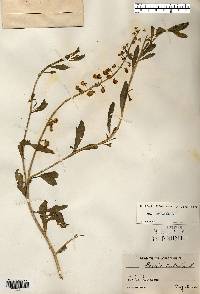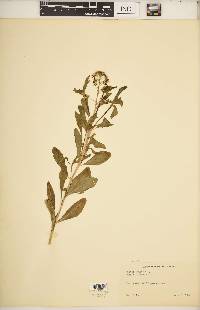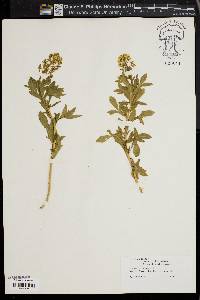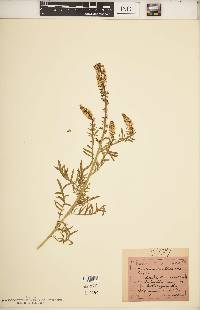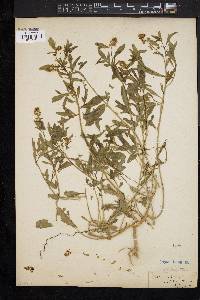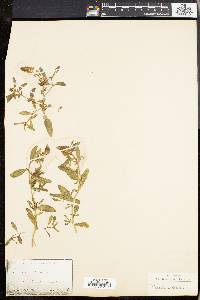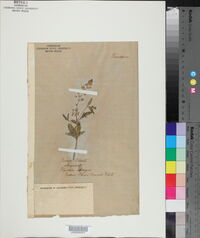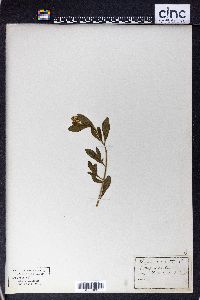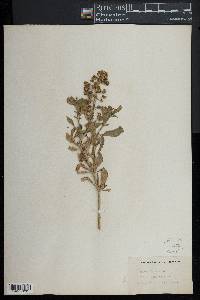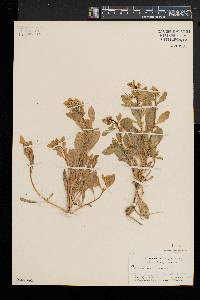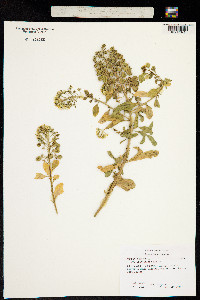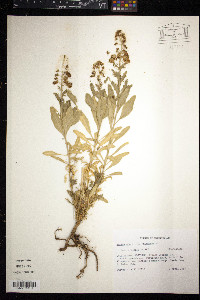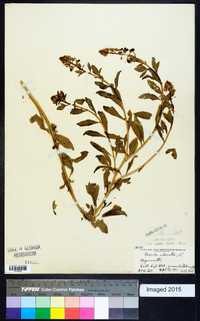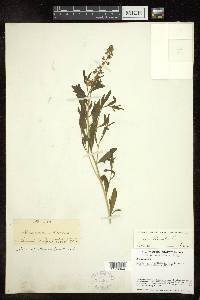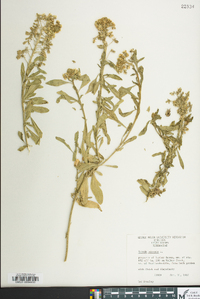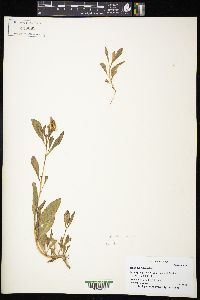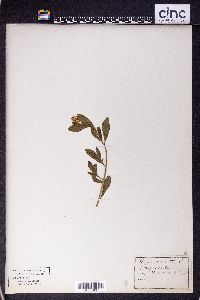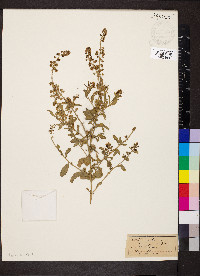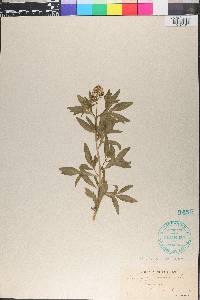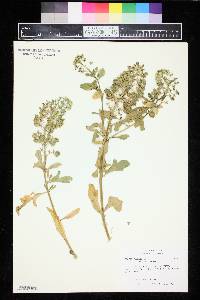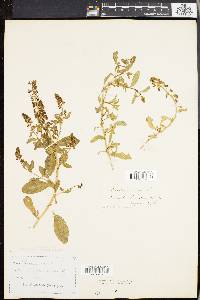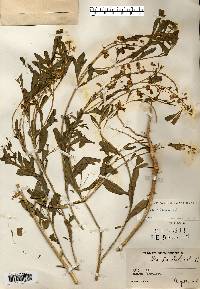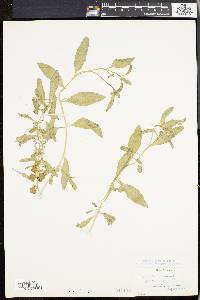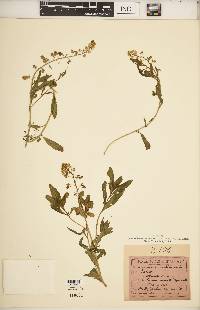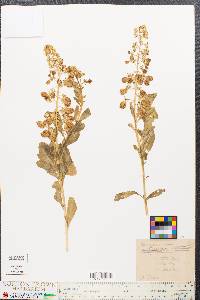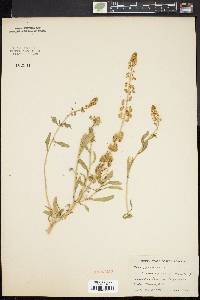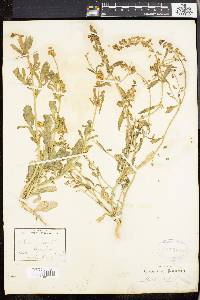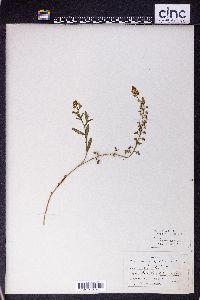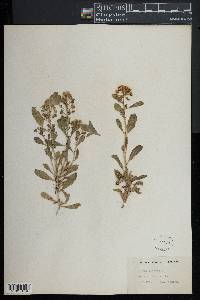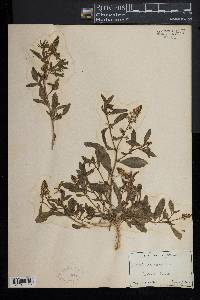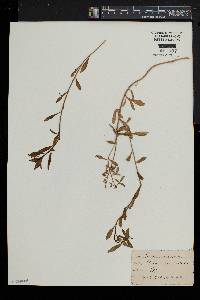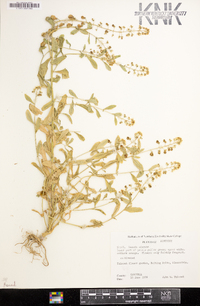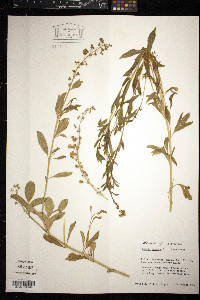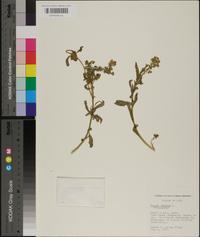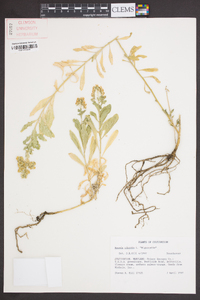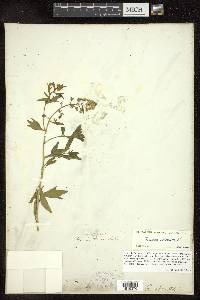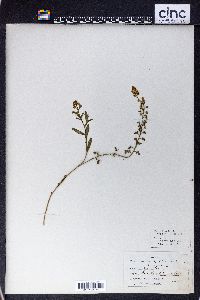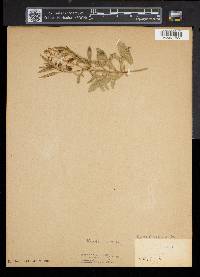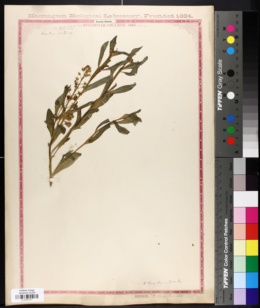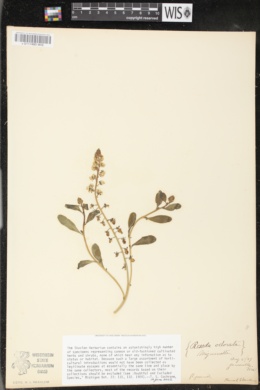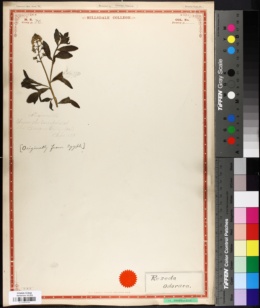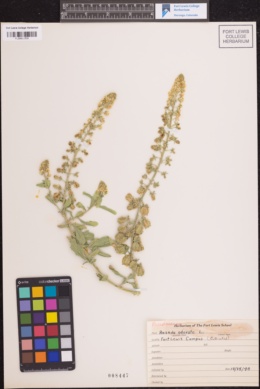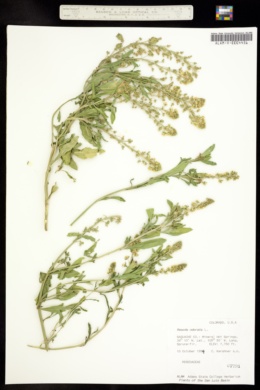Reseda odorata
|
|
|
|
Family: Resedaceae
Garden Mignonette
|
Plants annual 25-60(-80) cm, glabrous or puberulent. Stems erect or ascendent, branched. Leaves: blade spatulate to obovate, 3-5(-7) × 1-2 cm, margins entire or ternately lobed (distal cauline lobes 1-3 pairs). Racemes (3-)5-20 cm; bracts persistent, lanceolate-attenuate, 2-3 mm. Pedicels 4-6 mm (7-16 mm in fruit). Flowers (very fragrant); sepals persistent, 6, reflexed in fruit, narrowly elliptic to spatulate, 2.5-4.5(-6.5) mm; petals 6, white or light yellow, 2.5-4.5 mm, clawed, adaxial ones trisect, lateral lobes deeply laciniate; stamens 20-25; filaments deciduous, 2-3 mm, usually papillose; intrastaminal nectary-discs puberulous to velutinous; anthers 1.5-2 mm; placenta entire. Capsules deflexed or pendent, 3-carpelled, broadly cylindric to subglobose, 5-9 × 4-6 mm, apically 3-toothed, walls glabrous, ribs minutely scabrid. Seeds 1.5-1.8(-2.2) mm, dull, undulate-rugose. 2n = 12. Flowering (Feb-)Jun-Oct. Disturbed soils; 0-100 m; introduced; B.C.; Calif., Conn., Maine, Mass., N.J., N.Y., N.C., Pa., S.C., Vt., Wis.; n Africa. Reseda odorata is known primarily as cultivated plants, probably of artificial hybrid origin (S. Martín-Bravo et al. 2007). Probably originating in the southeastern Mediterranean basin (M. S. Abdallah and H. C. D. de Wit 1978), it has been grown in gardens for centuries for its fragrant flowers. The perfume industry has used the essence of the flowers. Now subcosmopolitan, R. odorata escapes from cultivation occasionally but is rarely found naturalized. It is far less common in the flora area than the other species of the genus.
Annual to perennial herb 15 cm - 0.6 m tall Stem: branching, upright at first, then spreading and trailing along the ground. Leaves: alternate, 5 - 10 cm long, 0.5 - 1.5 cm wide, spoon-shaped to elliptic-oblong or narrow and inversely egg-shaped, sometimes having one or two lateral lobes. Flowers: borne in a loose terminal infloresecence (raceme), greenish or greenish yellow to yellowish white, small, very fragrant, with six sepals and six unequal petals, the uppermost petal largest and the others progressively smaller, each petal nine- to fifteen-lobed at tip. The stamens are borne 20 to 25 on a fleshy disk and are clustered on one side of the flower, and the ovary is three-lobed at the tip. Fruit: a nearly spherical capsule, 9 - 10 mm long, 7 - 11 mm across, with a three-lobed tip that opens at maturity, containing greenish yellow kidney-shaped seeds. Similar species: i>Reseda alba and Reseda lutea have deeply divided leaves and capsules that are longer than wide. Reseda luteola flowers have four yellow petals and lack the strong fragrance of Reseda odorata flowers. Flowering: mid summer to early fall Habitat and ecology: Introduced from Europe and North Africa, this species is rare in the Chicago Region. Occurence in the Chicago region: non-native Etymology: Reseda comes from the Latin word resedo, meaning "to heal." Odorata means fragrant. Author: The Morton Arboretum With chiefly undivided lvs, and very fragrant fls on pedicels twice as long as the cal, the 6 pet greenish or greenish-yellow, with numerous filiform-clavate appendages, occasionally escapes from cult. Gleason, Henry A. & Cronquist, Arthur J. 1991. Manual of vascular plants of northeastern United States and adjacent Canada. lxxv + 910 pp. ©The New York Botanical Garden. All rights reserved. Used by permission. |


